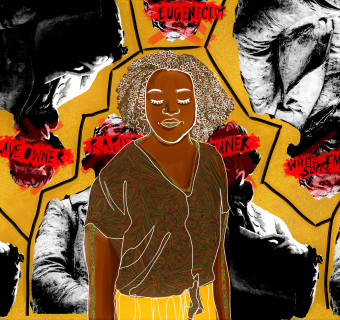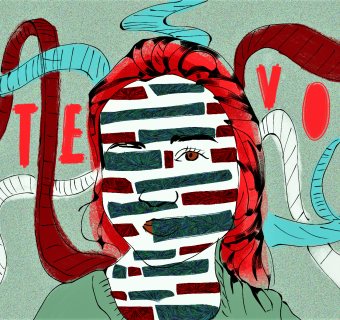
The almost-not-pregnant soft smile - essential for all women considering Plan B. Image courtesy of http://www.planbonestep.com
Story by Kendall Siewert
When Plan B first emerged on the market, it was a major step forward in female contraception. Plan B acknowledged the fact that mistakes in contraception happen, and allowed women the agency to protect themselves against possible pregnancy. But women quickly started to question the high price, and hidden information suggests that Plan B may not work as well as it should for some individuals. Plan B markets itself as a morning after pill “available for any woman who needs it – with no age restriction.” Simply put, this isn’t true. A single pill costs $50, a prohibitive price for those who don’t have disposable income and a deterrent for those who do. It’s not easy to decipher where this high cost comes from either, apart from explanations of pure corporate greed. When Plan B first hit the market through a company called Teva Pharmaceuticals,a three-year agreement with the FDA granted them exclusive marketing rights. Basically, that meant that until recently, no company could produce a cheaper, generic version of the morning after pill. Since generics are now available, the problem should be solved. But it isn’t. Most generic morning after pills retail for around $40, still an incredibly high price for a single pill and not much cheaper than the original Plan B. Why did the high cost still persist even after generics hit the market? What is it about Plan B that makes it so expensive, compared to certain generic monthly birth controls with you can find for under $10 at a Walgreens? I turned to the The American Society for Emergency Contraception’s Nationwide survey conducted in 2014 about the cost of Plan B for some answers. The survey of Plan B pricing at pharmacies nationwide conclusively found “even the lowest retail prices for EC [Emergency Contraception] are beyond the reach of many women . . . [so] all prices must be lowered to a more affordable level.” The next part gets a little bit complicated because drugs like Plan B aren’t sold from the manufacturer to the pharmacy. Instead, “manufacturers sell products to wholesalers, who then sell products to pharmacies.” The price of the drug is increased every step of the way. The estimated wholesale prices for Plan B are $32.50 to wholesalers and bulk purchasers and $39.00 to pharmacies. However, if birth control providers have found a way to lower their production costs to allow affordable levels, they should be able to do the same for Plan B. After all, Plan B contains the exact same synthetic hormone levonorgestrel as birth control pills, just at a higher dose. Certain Planned Parenthoods across the country will offer Plan B at a reduced cost, but this policy isn’t uniform, and it’s still not nearly as inexpensive as some generic birth controls. You can pick up Plan B or a generic morning after pill at Planned Parenthood in Charlottesville. Call ahead to see if the pill can be discounted, as it can be as low as $30 in other Planned Parenthoods across the country.
Plan B has another caveat to being “available to any women who needs it” – the mysterious weight restrictions. About two years ago, I read on Plan B’s packaging that it was less effective for women over 165 pounds and completely ineffective for women over 175 pounds. Since the average American woman weighs 166.2 pounds, this warning could come as a shock to a majority of users. This warning comes from a 2013 European study of NorLevo, the European equivalent to Plan B, claiming reduced effectiveness for women over 165. Then, in 2014, the researchers amended their claims, stating, “the data available are too limited and not robust enough to conclude with certainty that contraceptive effect is reduced with increased bodyweight.” So while Plan B might be less effective in heavier women, it may work just as well as it does lighter women. The problem is no one knows. Without conclusive data available to the public, Plan B leaves many questions unanswered. Furthermore, the little information available is really, really difficult to find, and is most certainly not present on their website. You wouldn’t take expensive medication for a sickness without being certain it would work. And when the stakes are so much higher, as they are with a potential pregnancy, why should the standards be any different? Women deserve a drug that is proven to work for them, with clear, available information if it does not. In discussing the weight limit, it’s easy to turn to fat shaming. There are two parts to this discussion. First, it’s easy to assume that in a thin ideal society, few women actually weigh over 175 pounds, and if they do, they should strive to lose weight. Secondly, when considering sex and desirability politics, it can also be easy to assume that fewer women in this weight range need emergency contraception because they probably have less sex due to a perceived lesser attractiveness. This logic claims fat girls won’t have enough sex to get accidentally pregnant, and if they do – shame on them for not being skinny enough to have the proper morning-after medication work for them. If the murkiness surrounding Plan B’s effectiveness were instead related to women under 165 pounds, there would likely be a much greater awareness and effort to find alternatives. However, because it’s for women who weigh more (a condition generally viewed as self-inflicted), there seems to be less of an effort to create an alternative. For all the good that Plan B has done in giving women more choices in contraception and giving them peace of mind, there are still many prohibitive issues with the drug. Drug companies need to work harder to find a cheaper alternative, and conduct more studies to clarify which women can actually effectively use Plan B. Until then, it’s not actually that revolutionary of a medication at all, but a mere capital-based, murkily effective drug available for thin and wealthy women and profiting from women’s panic.






